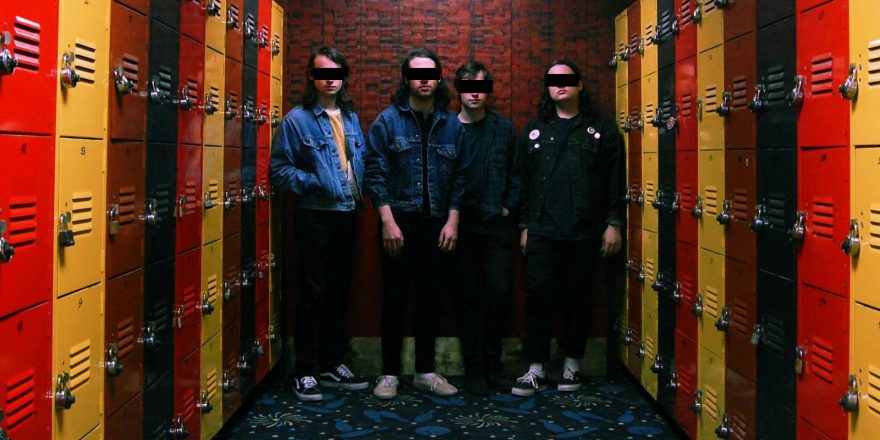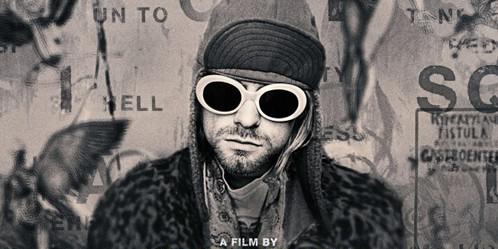Inspiration often comes from very likely places. One day in 2005, I sat down to play guitar in my one-bedroom apartment in Southeast Portland, Oregon. I strummed a few chords, and within a few hours had written the Thermals song “I Might Need You to Kill” (The Body, the Blood, the Machine, 2006). The progression is reminiscent of Nirvana’s “Drain You” (Nevermind, 1991), and why shouldn’t it be? Nevermind was one of my favorite records in high school, and has been a huge influence on me ever since I started playing guitar.
I’m comfortable admitting that my song, though able to stand on its own, is quite similar to “Drain You” — I’m not afraid of getting sued by Nirvana. I was truly inspired, and “I Might Need You to Kill” is the true result of said inspiration. Not all inspirations have such obvious origins, however, and I’ve found that the key to staying creative, productive and inspired can be found in constantly finding new and unlikely sources.
A well-written essay can sometimes be as much of a work of art as its subject.
Although I don’t necessarily enjoy writing critical reviews, I really enjoy reading them. A well-written essay can sometimes be as much of a work of art as its subject. I’ve never let a bad review dissuade me from seeing a movie or listening to a record, but a positive review will usually convince me to give something a chance. Reading a review of a film I’ve already seen or a record I’ve already heard interests me in the sense that it may provide a new angle I haven’t thought of, or help me cement my own opinion in relation to the author’s.
One of my favorite writers is A.O. Scott, film critic for The New York Times. I especially enjoyed one review of Scott’s in particular: his 2008 revisiting of Rambo: First Blood Part II (1985), as part of his “Critic’s Picks” video podcast. Scott explains how the film compares to modern action films that rely heavily on “frenetic editing schemes” and computer-generated special effects. In his retrospective review of the film, which the Times panned upon its initial release, Scott lovingly describes the “classical style” of some of First Blood Part II’s action set pieces that are “mapped out clearly and lead to explosive payoffs.”
If an action scene could be clearly mapped out and lead to an explosive payoff, why couldn’t a song?
That last line has stuck with me since I first read it. I immediately thought that it could be applied to art forms other than film — music, naturally, in my case. If an action scene could be clearly mapped out and lead to an explosive payoff, why couldn’t a song? It can, of course, and the connection I made is far from earthshattering. Nirvana’s songs were clearly mapped out and led to explosive payoffs. A.O. Scott could have been describing most songs on Nevermind — or, really, any Pixies song for that matter. Kurt Cobain famously told Rolling Stone in 1994 that, when writing songs for Nevermind, “I was basically trying to rip off the Pixies.” The clear-map/explosive-payoff combination could also be used to characterize songs by classic emo/alternative bands such as Fugazi, Smashing Pumpkins, Hole and Hum. These bands used simplicity and volume to set listeners up and knock them down in ways that I’ve always admired — and have often tried to replicate. It’s no coincidence that most of these bands were formed at the end of the ’80s, when First Blood Part II was released. Times were simpler back then, as was action.
Not long after the turn of the century, films got more complicated. The Bourne Identity (2002) utilized frenetic editing in most of its fight scenes, resulting in a film that is often confusing — although it’s clear that Bourne is kicking ass, it isn’t always clear how he’s doing it. Lord of the Rings: Fellowship of the Ring ushered in a new era of films that, save for the actors, appeared to be almost entirely computer-generated. At the same time, music also grew more complicated. Fall Out Boy’s massive hit record From Under the Cork Tree (2005) represented a major shift in the emo/punk scene. This wasn’t the simplistic bubblegum pop punk of the Ramones or even Blink-182. From Under the Cork Tree was an intricate (but bombastic) assault on the senses. This brave new world (which also included Panic! at the Disco and, later, Attack Attack) was definitely frenetic, heavily edited and at least computer-aided, if not generated.
Fall Out Boy doesn’t sound like the Ramones? Of course they don’t, and shouldn’t.
I definitely do not mean to denigrate any of these movies or bands. The Bourne Identity isn’t edited like it’s 1985? Of course it’s not. Frenetic editing was integral to the thrill of the ride. You’re not just watching the movie, you’re a part of it, getting your ass kicked along with Bourne’s nemeses. Fall Out Boy doesn’t sound like the Ramones? Of course they don’t, and shouldn’t. There’s a forty-year gap in the two bands’ creations. This future was a shiny new spacesuit, not your father’s worn leather jacket, and it did not want to be sedated.
The Bourne series, the Lord of the Rings films and From Under the Cork Tree are all amazing works of art — huge in scope and commercial appeal. I’ve enjoyed them all, but when I work as an artist myself, what they achieve is not what I strive for. I aim to communicate in simpler terms, with barre chords and rudimentary drums. I’m old-fashioned, and I use old-fashioned methods to achieve old-fashioned results.
When the Thermals were recording We Disappear (2016), I put my inspiration from Scott’s critique to full use. I set out to write exciting, dynamic songs that were simple and as visually evocative as they were aurally pleasing. I aimed to make the loud parts deafening, and the quiet parts so soft as to be barely audible. The maps were clear, the payoffs explosive. The result? A record that, to my ears, sounds very ’90s. It should come as no surprise, seeing as how my methods were used not only by ’80s action directors but by the ’90s bands that I adore as well. By taking a phrase that described a film and applying it to music, I did find inspiration in an unlikely place. In my execution, I brought myself right back to Nirvana, the band that stripped rock music of anything fancy or excessive and brought the genre back to its raw, dirty roots.
Nevermind was released in 1991, the year I turned sixteen, and will always remain not just the record that changed rock music forever, but the record that changed my life — and is still an inspiration to me. In his review of First Blood Part II, A.O. Scott says of Sylvester Stallone’s character, “John Rambo is a solitary figure, an agent of righteous vengeance. He exists on the margins of the society whose values and survival he is trying to defend and uphold. He’s not governed by anything, he’s not part of any institution. He’s an archetypal figure.”
Fuck yeah, so was Kurt Cobain.








